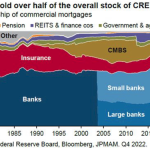Understanding personal preferences is a fascinating journey that reveals how our individual tastes are often shaped by a variety of external factors. Behavioral science suggests that our choices are significantly influenced by social norms, which can dictate everything from the music we enjoy to the brands we trust. For instance, brand loyalty can develop through exposure to particular products during our formative years, crafting our identities as consumers. Many assume their preferences are inherently original, yet they are frequently a reflection of harmonious trends within our communities. Exploring these dynamics not only sheds light on consumer choices but also emphasizes how identity formation is intrinsically linked to our preferences and behaviors.
When we delve into the concept of individual tastes, it’s essential to recognize that our likes and dislikes are often anything but spontaneous. Instead, these preferences can be seen as results of complex interactions influenced by cultural standards, societal expectations, and communal influences. By examining how these factors mold taste, we can gain insight into the broader implications of consumer behavior and brand relationships. This investigation into the nuances of choice-making allows us to appreciate how personal identity intersects with collective behaviors in shaping what we ultimately prefer. The conversation surrounding tastes not only enriches our understanding of ourselves but also highlights the intricate web of connections that define our consumption patterns.
Understanding Personal Preferences in Consumer Behavior
When we talk about personal preferences, it’s essential to understand that they don’t emerge in a vacuum. Influenced by social norms and cultural expectations, our choices often stem from a blend of personal experiences and external pressures. Behavioral science highlights that individual tastes are shaped from an early age, with family and peers playing a significant role. For example, music preferences are typically rooted in our teenage years—it’s often during this time that we start forming our identity and aligning our likes with those we admire.
As we transition into adulthood, the impact of social norms continues to manifest in more diverse ways. Take brand loyalty, for instance; consumers are heavily swayed by their parents’ choices and the brands that dominate their social context. This not only reinforces certain preferences but also limits the pursuit of alternatives. Consequently, while personal preferences may feel like genuine choices, they are frequently reflections of collective influence, leading to consumer choices that may not be as original as once believed.
The process behind personal preferences is crucial to understanding how we arrive at our adult choices. Even when we think we are making independent decisions, the underlying influence of social norms often remains unrecognized. The intricacies of identity formation intertwine with consumer behavior; we derive part of our identity from the choices we make, whether it’s the music we listen to or the brands we support. Thus, when discussing personal preferences, one must acknowledge the complex tapestry of factors, including familial and societal influences, that shape these choices.
This understanding is particularly important in areas like marketing and branding, where businesses seek to tap into consumers’ latent preferences. By identifying the social contexts that influence preferences, marketers can tailor their strategies to resonate with potential customers. From targeted ad campaigns on social media to brand collaborations that align with popular trends, the influence of social norms is a powerful tool that companies use to shape consumer choices and bolster brand loyalty.
The Role of Social Norms in Shaping Preferences
Social norms serve as invisible guideposts that dictate our choices across various aspects of life. In consumer behavior, these norms often steer us toward certain brands or products without our conscious realization. For instance, the pervasive acceptance of specific brands or lifestyle choices in our social circles can subtly pressure us into conforming. By aligning with these expectations, individuals affirm their belonging within a group, which explains why certain brands maintain popularity in localized markets.
Moreover, through the lens of behavioral science, we see how these norms can sometimes manipulate our perception of preference. For example, residents of a neighborhood may each claim their local pizza place is the best, not necessarily because it objectively is, but because cultural pride and local camaraderie tie their preferences to social identity. This illuminates how social proof and peer influences effectively mold consumer choices, creating a feedback loop that reinforces brand loyalty.
The complexity of consumer choices reflects the nuances of identity formation. In various demographics, preferences can often diverge based on cultural backdrop and social influences—what is favored in one region may be vastly different in another. Understanding these dynamics allows marketers to create campaigns that resonate on a deeper level, appealing not only to individual preferences but also to the overarching social norms that dictate them. This strategic insight is invaluable for brands aiming to establish lasting connections with their consumers.
In essence, our preferences are less about individual taste and more about shared experiences and norms. As consumers navigate an increasingly complex marketplace, recognizing the role of social influence can help demystify why we choose one product over another, thus unlocking the potential for more effective communication and branding strategies in diverse markets.
Identifying the Influence of Social Norms on Brand Loyalty
Brand loyalty is intricately linked to the influence of social norms, as people often choose brands that are popular within their social circles. This phenomenon can be particularly observed in fashion and lifestyle products, wherein individuals are drawn to brands that reflect the values and aesthetics of their community. Behavioral science suggests that when consumers see their peers engaging with a brand, they are more likely to develop an affinity for it, reinforcing brand loyalty over time.
Additionally, the presence of social validation can profoundly affect consumer behavior. For example, when a brand receives endorsements from influential figures or is consistently seen in social media posts, potential customers often jump on the bandwagon, believing that their preference aligns with a desirable identity. This understanding of brand loyalty guided by social norms illustrates how consumer choices can frequently stem from a desire to fit in or feel accepted rather than a purely personal liking.
Furthermore, as consumers become increasingly aware of their representations within society, they frequently evaluate brands not just on quality but on the social narrative they promote. This leads to nuanced choices where a consumer’s preference for a brand is also an assertion of their identity. In this context, marketers have the potential to craft campaigns that appeal to these ingrained social norms, promoting brand messages that resonate on a personal level while reinforcing social bonds.
Consequently, the interplay between brand loyalty and social norms exemplifies the need for businesses to understand their audience deeply. By leveraging these insights, brands can establish meaningful connections that foster loyalty, ensuring that their products not only meet consumer needs but also resonate within the social landscapes consumers navigate.
How Preferences Evolve Over Time
Consumer preferences aren’t static; they evolve based on an array of influencing factors, including shifting social norms and life experiences. This dynamic process is often explained through the concept of switching costs, which refers to the ease with which a consumer can transition from one brand to another. For products that require little adaptation—like clothing or fast food—switching costs are low, making it easy for preferences to change in response to new trends or recommendations.
In contrast, high switching costs can lock consumers into specific preferences over extended periods. For items like electronics, where users must navigate a new interface or adapt to different operating systems, the decision to change brands becomes more complex. This highlights how long-term exposure and personal investment in a product can significantly shape preferences, leading consumers to stick with what they know, even when attractive alternatives are available.
Moreover, understanding how preferences evolve can provide critical insights for brands aiming to adapt to changing markets. By anticipating shifts in consumer behavior, driven by emerging social norms or economic factors, companies can innovate their products or marketing strategies to better align with consumer needs. This proactive approach not only enhances brand relevance but also fosters a deeper connection with consumers as their tastes continue to evolve.
Ultimately, the evolution of preferences is a multifaceted journey shaped by personal experiences and social encounters. For businesses, the challenge lies in navigating these changes while remaining attuned to the influencers, such as social norms and group identity, that guide consumer choices at every stage.
The Interplay Between Marketing and Personal Preferences
Marketing strategies today are intricately designed to understand and manipulate personal preferences. With advancements in behavioral science, companies are leveraging data analytics to dissect consumer behavior, revealing trends that help refine targeting. Each time consumers interact with a brand—through purchases, social media engagement, or online reviews—they contribute to a wealth of data that marketers can analyze to better understand what drives preferences.
However, this data-driven approach raises questions about the authenticity of personal preferences. As brands increasingly tailor their messages to align with identified consumer behavior, individuals may find themselves responding to curated options based on past interactions rather than their unadulterated tastes. This situation can lead to a cycle where consumers’ choices are influenced by brand algorithms, creating a feedback loop that reinforces certain preferences over time, often blurring the lines of personal authenticity.
Brands seeking to build genuine relationships with consumers must therefore navigate this complex landscape carefully. Engaging consumers authentically requires an understanding that while they are indeed swayed by social norms, they also desire a sense of individuality in their choices. Providing options that cater to diverse consumer identities and fostering community discussions around products can empower consumers to express their preferences, reinforcing brand loyalty through a sense of belonging.
As this interplay between marketing and personal preferences continues to evolve, businesses that prioritize transparency and person-centered models will likely succeed in fostering lasting consumer relationships. The challenge remains in balancing targeted marketing with genuine engagement to ensure that personal preferences remain a true reflection of individual desires rather than mere products of strategic influence.
The Impact of Technology on Consumer Choices
Technology has revolutionized how we make consumer choices, introducing new avenues for brand interaction and exposure. From targeted advertising on social media to personalized recommendations on e-commerce sites, the influence of algorithms has reshaped the landscape of consumer behavior. As a result, our preferences are increasingly being shaped not only by personal experiences but also by sophisticated data analytics that predict what we might like based on our previous engagements.
However, this technological approach is a double-edged sword. While it can improve user experiences by offering personalized options, it can also narrow the scope of choice, causing consumers to miss out on alternatives that might better align with their true preferences. When consumers rely heavily on algorithm-driven suggestions, they might inadvertently limit their exposure to a broader range of products, inadvertently reinforcing existing brand loyalty.
Conversely, technology can also enhance the discovery of niche products and emerging brands that resonate with specific subcultures. Online platforms allow for easy exploration, enabling consumers to break away from mainstream options and explore diverse offerings that reflect their personal values and preferences. This reflects a growing trend where consumers seek authenticity and deeper connections with brands that resonate with their beliefs.
In conclusion, while technology shapes consumer choices by providing tailored experiences, it also presents opportunities for exploration beyond established norms. Brands that harness technology not only to streamline consumer experiences but also to foster authentic engagements will likely find success in an increasingly complex marketplace.
Frequently Asked Questions
How do social norms influence personal preferences in consumer choices?
Social norms play a crucial role in shaping our personal preferences, often leading us to favor brands and products that are popular within our social circles. Behavioral science shows that our choices are influenced by the habits and preferences of those around us, reinforcing brand loyalty and affecting our decisions in various categories such as fashion, food, and entertainment.
What role does identity formation play in personal preferences?
Identity formation significantly impacts personal preferences as individuals often gravitate towards products and brands that reflect their self-image and social identity. During adolescence, for example, music preferences help shape one’s identity, which subsequently influences ongoing consumer choices throughout life. This connection demonstrates how deeply intertwined self-identity and personal preferences can be.
How can understanding consumer choices improve brand loyalty?
Understanding consumer choices is essential for fostering brand loyalty. By recognizing the factors that drive preferences, such as social influences and personal identity, brands can tailor their marketing strategies to resonate with consumers’ values and expectations, thereby creating stronger emotional connections and loyalty.
How do behavioral science findings explain shifts in personal preferences over time?
Behavioral science highlights that personal preferences can shift due to a variety of factors, including changing social norms and experiences. For instance, as individuals encounter new environments or peer groups, they may develop new preferences that align with their evolving identities, illustrating how consumer choices are dynamic and context-dependent.
What impact does exposure to targeted advertising have on personal preferences?
Targeted advertising can significantly shape personal preferences by presenting brands and products that resonate with an individual’s perceived identity. Sociocultural influences, along with data-driven personalization techniques, lead consumers to develop preferences aligned with what they see in their social media feeds or targeted ads, often without conscious awareness.
How do parents influence the development of personal preferences in their children?
Parents have a profound impact on the development of their children’s personal preferences. Early exposure to specific products, such as favorite food brands or styles of clothing, tends to create lasting impressions that influence future consumer choices, as children often adopt the preferences of their parents, contributing to brand loyalty.
Can personal preferences change easily, and what factors contribute to this?
Personal preferences can change, but the ease of changing them varies by product category. Factors like switching costs — the effort or inconvenience of changing from one brand to another — greatly influence whether individuals stick with their preferences or explore alternatives in their consumer choices.
What are subcultures, and how do they relate to personal preferences?
Subcultures are groups within a larger culture that share distinct preferences and practices, often influencing personal choices. These subcultures reinforce unique identities, allowing individuals to express themselves through specific brands or styles that align with their shared values and experiences, further shaping consumer behaviors.
| Key Point | Explanation |
|---|---|
| Formation of Preferences | Music preferences develop during formative teenage years, while preferences for products like cars are established later when shopping. |
| Influence of Others | Parental preferences significantly shape individual choices; our choices may reflect those of our family or social circles. |
| Attitudes Vs. Choices | Our attitudes often influence our choices, but sometimes the product itself can shape our preferences afterwards. |
| Social Media Impact | Marketing strategies target users based on social media personalities, creating a tailored advertising experience. |
| External Influences | Fashion choices are influenced by social surroundings rather than individual desires; communities play a strong role in shaping tastes. |
| Switching Costs | The ease or difficulty of switching from one product brand to another influences whether individuals remain loyal to their existing preferences. |
Summary
Personal preferences are deeply influenced by social interactions and environmental factors, as the recent discussions in behavioral science reveal. While many think that their likes and dislikes are purely personal choices, the research suggests otherwise. From teen music preferences to product brand loyalty shaped by parental influences, it’s clear that our tastes are not entirely our own. Understanding this can help individuals make more informed choices and reflect on how external factors push them towards specific preferences.


